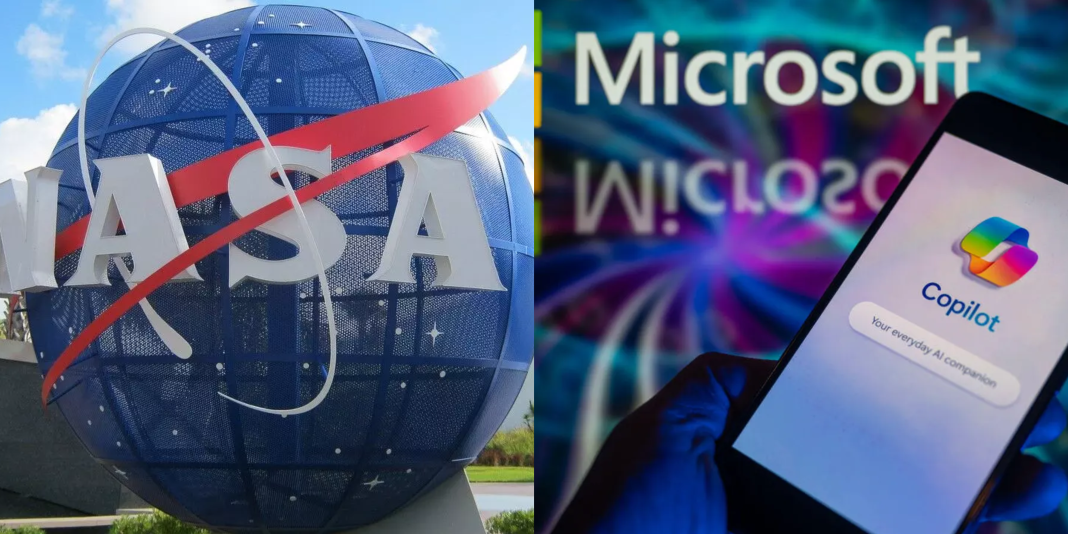Imagine if you could explore Earth’s secrets, like tracking weather changes or studying how forests grow, all with the help of a virtual assistant! That’s exactly what NASA is doing with a new tool called Earth Copilot, developed with the help of Microsoft. Using artificial intelligence (AI), NASA aims to make complex scientific data more accessible and useful for everyone. Let’s dive into Earth Copilot, how it works, and why it’s an exciting step forward in technology and science.
NASA Teams Up with Microsoft to Simplify Science
NASA has mountains of scientific data about Earth, collected from satellites, weather stations, and research projects. This data helps scientists understand the planet, but it’s often so detailed and technical that it’s hard for most people to use. That’s where AI, or artificial intelligence, comes in.
NASA partnered with Microsoft to create Earth Copilot, an AI-powered tool designed to make all this data easier to access and understand. By simplifying how the data is presented, NASA hopes to help more people, including students, scientists, and governments, use the information to make important decisions about our planet.
What Is Earth Copilot, and How Does It Work?
Earth Copilot is like a super-smart assistant that can analyze huge amounts of Earth-related data and turn it into clear, easy-to-understand answers. It uses Microsoft’s AI technology to process data collected by NASA and present it in a user-friendly way.
For example, if someone wants to know how much rain has fallen in a particular area or how quickly a forest is shrinking, Earth Copilot can quickly analyze the data and provide insights. It’s designed to handle complex scientific information and make it understandable for people who may not be experts in science.
Why Using AI for Scientific Data Is a Game Changer
One of the biggest benefits of using AI like Earth Copilot is that it makes scientific information accessible to more people. In the past, only trained scientists could understand the highly detailed data that NASA collects. Now, Earth Copilot can simplify this information and make it available to students, policymakers, and even the general public.
This helps people make better decisions. For example, a farmer could use Earth Copilot to predict weather patterns and decide the best time to plant crops. Similarly, governments can use it to monitor natural disasters like floods and fires, helping them respond faster and save lives.
How Earth Copilot Helps Scientists and Users
Earth Copilot is particularly useful for scientists, as it saves them time and effort. Instead of manually sorting through thousands of charts and graphs, scientists can ask Earth Copilot-specific questions and get quick, accurate answers. This allows them to focus more on solving problems, like combating climate change or preserving wildlife.
For everyday users, Earth Copilot could be a learning tool. Students can use it to explore topics for school projects, like studying how temperatures are rising around the world. Environmentalists can track the health of forests or oceans, using the data to support conservation efforts.
Why Earth Copilot Matters
Earth Copilot isn’t just a tool—it’s a way to make science more inclusive. Breaking down complex data allows more people to engage with important topics like climate change, weather patterns, and natural resources. This is especially important as the world faces global warming and the need for sustainable living.
For example, imagine a community planning to build a new park. With Earth Copilot, they could analyze the area’s rainfall, soil quality, and vegetation to design a space that benefits both people and the environment.
Conclusion: AI Unlocks the Power of Science
In conclusion, NASA’s Earth Copilot is a groundbreaking tool that uses AI to make scientific data more accessible and useful. By teaming up with Microsoft, NASA has created a system that simplifies complex information, making it valuable for scientists, students, and decision-makers.
As AI evolves, tools like Earth Copilot will play a key role in solving some of Earth’s biggest challenges. They remind us that technology isn’t just about convenience—it’s a powerful way to help us understand and care for the world we live in. With Earth Copilot, exploring the wonders of our planet has never been easier!






































